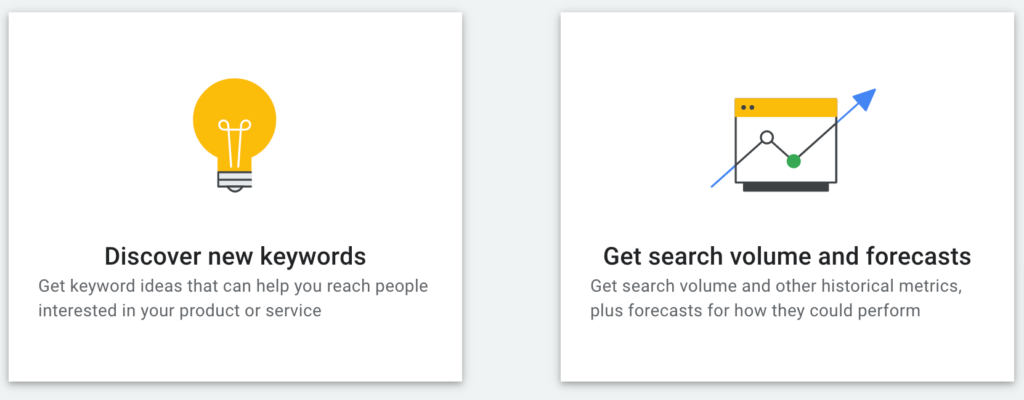Understanding what your users are searching on is the most important part of the search engine optimization process. Not only does it help you determine what words and phrases to optimize for, but it can also help you structure the navigation of your website. You can then set your URL hierarchy and help in making decisions with additional marketing efforts. The key to performing your initial Keyword Analysis is to find as many key terms as you possibly can. No matter what the focus is, or if it’s not 100% relevant to your business. The more terms you have to begin with, the better you can do to plan out your website and your marketing.
The Keyword Analysis
A Keyword Analysis is simply a means of gathering up as many words and phrases as possible that users are using to find what they need on search engines.
There are numerous sources to do this including:
- Google Keyword Planner Free to account holders
- Bing Keyword Research Free to account holders
- Wordtracker cost from $27 to $99 per month (free trial available)
- Keyword Discovery $29 to $495 per month (free basic search)
- Wordstream $199 to $399 per month (free trial available)
Learn How to do a Keyword Analysis
Using Google’s Keyword Planner
If you don’t have an Adwords account set up, you will want to start one. You won’t need to start any campaigns, but you will probably need to add a Credit Card to get the account set up.
Once you account is set up, go into the “Tools and Setting” menu (at the top) and select “Keyword Planner”.
You will see two options:
- Discover New Words
- Get Search Volume and Forecasts

The second option is to be used if you have a long list of keywords that you want to know how much they are being searched, and any cost data associated (remember this is a tools for advertising). You will want to choose “Discover New Words“.
You will see a line where you can enter up to 10 phrases that are relevant to what you think your users are searching:

There are many options available, but when you’re just starting out it’s best to enter a few words and see what you get from there.
Click the “Get Results” and Google will show you data for the keywords you specified in the top section, and then a list of suggested words similar to those.

Here you can download your keyword ideas into a .csv or Google Sheets. We’ll use Google Sheets as an example in this exercise.


Choose where you would like to save your new Sheet (Google defaults it to your drive and provides the name with the date and time you pulled this list). Then open up the sheet:


You will see a few columns with data you won’t need (at least, not for SEO). Since this is an Advertising tool, Google provides you with information on competition (how many others are bidding on that term), bid estimates, etc. Highlight those unnecessary columns and delete them:


| Keyword | Avg. monthly searches |
| computer | 500,000 |
| laptop computer | 50,000 |
| pc | 500,000 |
| gaming pc | 500,000 |
| raspberry pi | 500,000 |
| laptops | 5,000,000 |
| dell laptops | 500,000 |
| mac pro | 50,000 |
| remote desktop | 50,000 |
| apple laptop | 500,000 |
Your keyword analysis should be simple, with just the keywords and the average monthly searches.
When it comes to the average monthly searches (or Keyword “Volume” as some tools call it) keep in mind that this tool is for advertising. Google rounds up the actual number of times this keyword is searched, and uses a broad match (which a targeting type for Google Adwords in which any word pr phrase that matches this one is counted. i.e. “cars” would include “car” and “automobiles” as well). That total number is then averaged out (usually for the last 12 months, unless you specify a time frame) and rounded up.
These are not to be used as actual projections, but more as a guide to understand how popular a keyword is so that you can best optimize for it.
Compare Keyword Analysis with Existing and Paid Search
For the Intermediate to Advanced SEOs
You can also pull current referring terms that have driven traffic to the website in the past 12 months from Google Search Console, or using a tool like Keylime Toolbox or Moz’s Keyword Explorer, etc. You can combine that with an additional set of terms that the website has gotten impressions for (but not necessarily clicks), as well as any search terms that the website has shown up for if the client has been running any Adwords or Bing Advertising campaigns. All of these reports help to see what the website shows up for, what additional terms the website could get to show growth potential. This also shows any potential increase the site could see on current terms that aren’t generating clicks by increasing ranking position and testing title and descriptions (as well as ratings, reviews, pricing, etc) that show up in the snippet for those terms.
